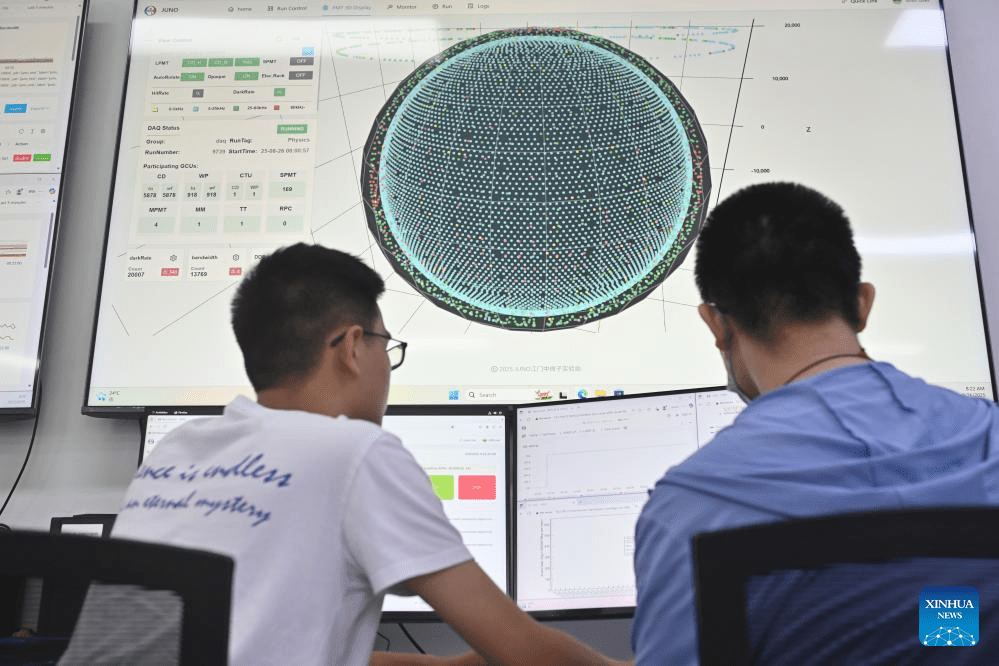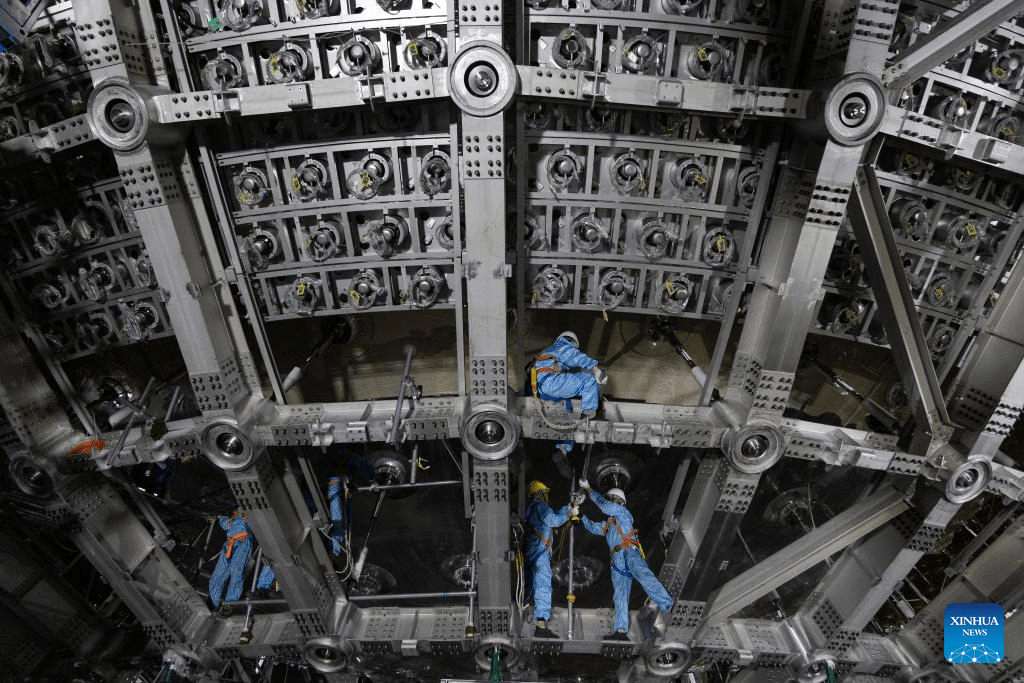China launches world's largest neutrino detector to uncover the 'ghosts' of the universe

China has marked a new milestone in particle physics with the start of operations of the Jiangmen Underground Neutrino Observatory (JUNO) . Located 700 meters underground in southern Guangdong province, JUNO is the world's largest transparent spherical detector, dedicated to neutrino research with unprecedented precision.
After more than a decade of preparation and construction, the observatory has completed filling its detector with 20,000 tons of liquid scintillator and begun collecting data , according to the Chinese news agency Xinhua. The first detections, obtained during the test phase, confirmed that performance indicators met or exceeded design expectations. This success positions JUNO as a key tool for answering one of the most fundamental questions in particle physics: the mass order of neutrinos .
Neutrinos, often nicknamed "ghost particles" for their elusive nature and the rarity with which they interact with matter, are among the least understood of all fundamental particles . JUNO will detect them through faint flashes of light generated by their interaction with hydrogen inside the detector, transforming these signals into analyzeable data.

Researchers work in a control room at the Jiangmen Underground Neutrino Observatory (JUNO) in Jiangmen, Guangdong Province, China. Image credit: Liu Yuexiang/Xinhua
" Filling the JUNO detector and starting data collection marks a historic milestone. For the first time, we have commissioned a dedicated neutrino detector of this scale and precision. JUNO will allow us to answer fundamental questions about the nature of matter and the universe ," Wang Yifang, JUNO spokesperson and researcher at the Institute of High Energy Physics (IHEP) of the Chinese Academy of Sciences (CAS), told Xinhua news agency.
The construction of JUNO, proposed in 2008 and approved in 2013, represented a huge engineering challenge. " Building JUNO has been a journey of extraordinary challenges ," said Ma Xiaoyan, JUNO's chief engineer . " It required not only new ideas and technologies, but also years of careful planning, testing, and perseverance. " At the center of the structure is a 35.4-meter-diameter acrylic sphere that houses the liquid scintillator, supported by a stainless steel truss and more than 45,000 photomultiplier tubes.

After filling its detector with 20,000 tons of liquid scintillator, JUNO in Guangdong began collecting data after more than a decade of preparation and construction. (Photo Credit: Xinhua/Jin Liwang)
JUNO is a collaborative project involving more than 700 researchers from 74 institutions in 17 countries and regions . The international community has played a key role in the project's development. " This historic achievement we are announcing today is also the result of fruitful international cooperation with many research groups outside China, who have brought to JUNO their expertise gained from previous liquid scintillator configurations ," explained Gioacchino Ranucci, professor at the University of Milan and JUNO Deputy Director .
With an expected lifetime of up to 30 years, JUNO has the potential to become a world-leading research infrastructure. It is designed to investigate the absolute mass of neutrinos and test whether they are Majorana particles, identical to their antiparticles . The observatory will open new windows to explore unknown physics, with significant implications for understanding particle physics, astrophysics, and cosmology.
Image Credits ( Xinhua/Jin Liwang)
Adnkronos International (AKI)




